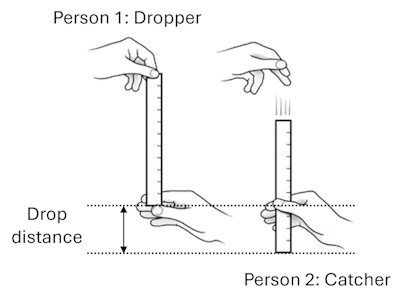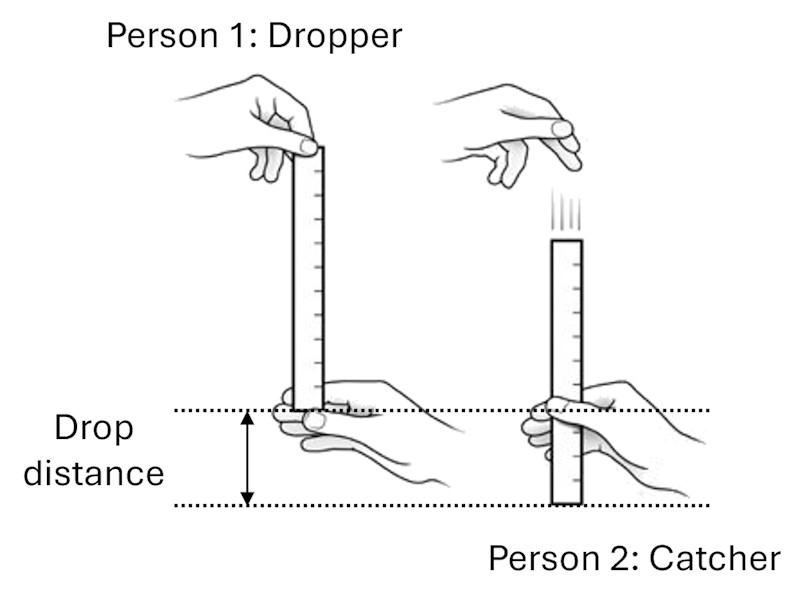Your body reacts almost instantly to things happening around you? From catching a falling object to stopping yourself from stepping on a bug, your response time plays a huge role in daily life. Scientists and athletes measure response time to understand how quickly the brain and muscles work together. For example, F1 car drivers have incredibly fast response times – sometimes around 0.2 seconds – allowing them to react to sudden changes on the track! Fighter pilots also train to sharpen their reaction speed, since even a split-second delay in the air can make a huge difference!
In this activity, you will explore your own response time and see how fast your brain can tell your muscles to act. You will also get a chance to compare your results with friends and see how different activities might influence how quickly you respond.
Science Involved
Your response time is the total time your body takes to notice something and then react to it. This might feel instant, but several quick steps happen inside you. First, your sense organs such as your eyes notice what is happening. This information then travels as electrical signals through your nerves to your brain. Your brain decides what action to take and sends a message through your nerves to your muscles, telling them to move. All of this happens in a fraction of a second.
In the falling ruler activity, your eyes see the ruler drop. Your brain processes this sudden change and sends a signal to your fingers to close. The distance the ruler falls shows how long this process took. A longer fall means your brain and muscle communication took slightly more time.
Different people have different response times based on attention, sleep, practice, stress and the type of activity. By repeating the experiment several times, you can notice how consistent your responses are and what might make you faster or slower.
Activity
Safety Instructions
If you are using a falling object like a scale, be careful to avoid hitting your feet.
Requirements
Ruler or measuring scale, pen, paper, stopwatch or timer, computer/tablet with internet access (for online tool option), friend or partner
Procedure
-
Choose one of the two methods: the falling scale method or an online response time tool.
-
If using the falling scale method, have your partner hold the ruler vertically between their thumb and forefinger. Keep your hand ready around the 0 mark of the scale before your partner drops it.

Ruler drop experiment to determine response time. -
Your partner will drop the ruler without warning, and you must catch it as quickly as possible without moving your hand. One way to ensure that you don’t move your hand is to rest your hand on a table.
-
Record the distance the ruler fell before you caught it.
-
Repeat the measurement 5-10 times and note each distance carefully.
-
Use the equation \(d = \frac{1}{2}gt^{2}\) to calculate your response time for each trial, where \(d\) is the distance the ruler fell and \(g\) is the acceleration due to gravity \((9.8\ m/s^{2})\).
-
If you use an online tool, follow the instructions on the website to test your response time multiple times and record your results.
-
Look at your data and calculate the average response time.
Reflect and Discuss
-
How did your response times change across different trials? What might explain any differences?
-
How does your response time compare to that of an F1 driver?
-
Do you think your response time would improve if you practiced, or get slower if you were tired?
-
How do you think response time affects safety in everyday life, such as crossing the road or playing sports?

